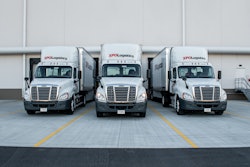There is magic around the 10% solution. I expect many fleets and OEMs have sat through many presentations, read many articles and reports where the claim of a 10% improvement in fuel economy is supposed to wow.
My guess is that 10% is where the venture capitalists and fleet customers seem to get interested in an idea, where 9% or 6% or 3% just are not attractive enough to raise an eyebrow.
How much of those 10% claims do fleets actually see in their real-world operations?
That question has no easy, single answer. I’ve spent a considerable part of my career in this industry trying to understand the differences between controlled test results and the real world.
The fundamental challenge is that repeatable tests — those that arrive at nearly the same answer each time — require controlling a lot of variables. Those variables include the weather, the vehicle, the driver, the load, traffic, time of day, etc. Test engineers have to simplify tests by controlling many of these factors. For example, traffic and grades need to be identical for each test, so testing is done on a track with no traffic. Weather is very unpredictable, so testing is done in rare, nearly still wind conditions where the ambient temperature is moderate.
Other factors are controlled by attempting to cancel them out. For example, each trailer is unique. A tractor test looking at fuel economy versus a baseline vehicle will be run at the same time of day at the same track. To eliminate any bias caused by factors unique to each trailer, the tests will be done twice, with the trailers swapped between the two tractors. Near-zero wind conditions are very hard to find, and grade variations are typical, so tests often are conducted in both directions on a road or track, hopefully cancelling out any bias that the direction might induce in the results.
Other factors, called transients, are minimized, trying to operate the vehicle as steadily as possible.
The real world is not controlled. Fleets and drivers see it all.
Another key aspect of the 10% solution is knowing just what the 10% is being compared to. As I’ve often stated, there are no average trucks, no average drivers and no average loads. Is the 10% savings in comparison to a 2005 truck or a 2010 truck or a new 2022 one? Are the specifications even remotely similar? Even something as simple as comparing fuel economy of one truck’s baseline taken in 2020 to the same truck with a new aerodynamic device added in 2022 is a faulty comparison.
Turns out that tires wear and their rolling resistance improves as they wear. Engine fuel efficiency improves in the first few years as parts wear down, and then later it worsens. The driver’s impact may change over time as well. Certainly, traffic in 2020 was different than it is in 2022. All those other vehicles impact the aerodynamics of the test truck. Has the load changed in weight? Trailers differ, too, with some being much older and heavier. If they have changed between tests, that will impact the numbers.
The 10% solution is also a flaky number. A 2022 aerodynamic tractor hauling a 2022 aerodynamic trailer at 65,000 lbs. gross vehicle weight may get 10 mpg out of the box with a proficient driver focused on fuel economy. That same driver in a 2008 tractor with a 2008 non-aerodynamic trailer at 65,000 lbs. again may get only 6 mpg. The 10% solution means different things to these two trucks. Ten percent for the 2022 tractor means an improvement of 1 mpg, but for the 2008 tractor, 10% means only a 0.6 mpg improvement.
In the 1980s, it was very possible to get 10% improvements on vehicles. Simple things like just adding a roof fairing could do that. In the 2020s, major new models are reporting factual improvements of perhaps 6% versus the prior model after five years of extensive development. Concepts that reliably get 1%-2% improvement are considered worthy of investment by OEMs. It’s pretty rare to find the low hanging fruit anymore.
Those 10% solutions are out there – for example, battery electric tractors can get two to three times the fuel economy of a diesel. Other hybrid battery electric powertrains like hydrogen fuel cells, or combining smaller diesel engines with BEVs, have the potential for 10% scale improvement. Automated and connected vehicles — the so-called autonomous trucks — may have duty cycles where 10% mpg gains are possible.
The trucking industry has seen a lot of innovation over the years, and I never bet against the innovators working in research and development at the OEMs.
Part of the 10% solution hinges on you as the consumer. The next 10% solution you hear about, ask the tough questions: What was the baseline? How was it tested? What real world numbers should your duty cycle see?












